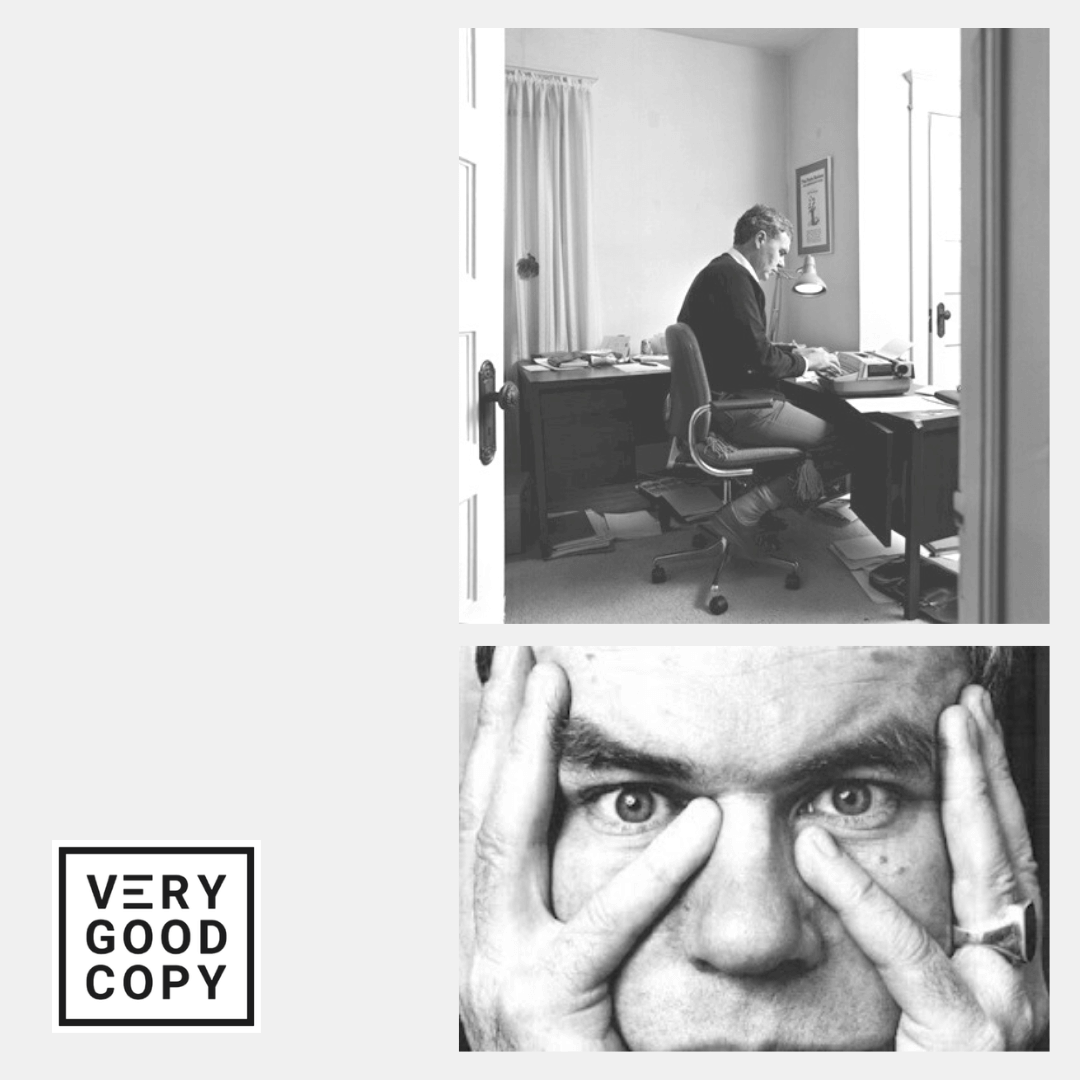
The lecture hall wasn’t big but it wasn’t small, either.
I was sitting in an aisle seat. The professor was twenty, maybe twenty five feet away from me. Maybe thirty. I don’t know.

Never miss a VeryGoodCopy Micro-Article: SUBSCRIBE
“Cathedral,” said the prof. He wrote the word on the blackboard. “By Raymond Carver.” He placed the chalk on the ledge and turned around. “Who here read it?” he said. “Raise your hand.”
I raised my hand. Most of my classmates raised their hands.
“Ms. Dossett,” the professor said, pointing to someone. “You read Cathedral?”
“Yes.”
“Tell us about it.”
Ms. Dossett cleared her throat. “The story is narrated by a man whose wife is dear friends with a blind person. I think the blind man’s name is Robert?” she said. The prof nodded. “So Robert,” she said, “comes to visit his friend, the wife, after not seeing her for a long time.”
“And what about the husband, our narrator?” the professor said. “How does he feel about Robert?”
“He mocks him,” Ms. Dossett said. “He finds blindness strange.”
“He’s ignorant,” said the prof.
“Yes—and callus, and demeaning,” she said.
The professor nodded. “And how does the story end?” he said.
“Abruptly.”
The class laughed. The professor did, too. We laughed because it was true. The ending was so sudden, it felt as though Carver stood up mid-thought and never sat back down. But this is typical Carver. He often ends his stories without a neat, satisfying conclusion.
This is called a “zero-ending.”
Carver often ends at the moment his characters are faced with a realization; at the onset of growth; on the precipice of change, or transformation, even. Because by doing so, The Reader doesn’t merely witness the character’s epiphany—she experiences it. And it stays with her after the story is over. She carries it.
It’s a remarkable thing to experience.
In the story, Robert and the husband are sitting in the living room. They’re drinking after dinner. The wife is asleep on the couch. The tv is on, a PBS documentary about famous cathedrals. The husband gets curious. He asks Robert if he has any idea what a cathedral looks like: “If someone says ‘cathedral’ to you,” he asks, “do you have any notion of what they’re talking about?”
In the story, Robert replies: “Hey, listen to me,” he says. “Will you do me a favor? I got an idea. Why don’t you find us some heavy paper? And a pen. We’ll do something together. We’ll draw [a cathedral] together.”
In the story, the husband draws a cathedral on an old shopping bag, pressing hard with his pen while Robert cradles his fingers, moving with him, drawing literally hand-in-hand. Then Robert tells the husband to close his eyes while he draws.
He does this. He closes his eyes. And he doesn’t open them for some time. He keeps them closed. He sits there, in darkness.
“How is it?” Robert asks him.
The drawing is complete now but the husband keeps his eyes shut. His answer is the last sentence of the story:
“It’s really something,” he says.

LEARN TO PERSUADE
✅ Join thousands of email subscribers
✅ Less than 0.4% of readers unsubscribe
✅ Never miss a Micro-Article or -Interview
✅ Get instant email access to VGC's founder
✅ Be first in line to get new, free Micro-Courses
DRAYTON BIRD
Global Creative Director @ Ogilvy & Mather
BEN SETTLE
Email Marketing Master
KIM KRAUSE SCHWALM
A-List Direct Response Copywriter
RYAN BONNICI
Forbes 26th Most Influential CMO
SCOTT DIKKERS
Founding Editor @ The Onion 🧅
LISA PIERSON
Partner @ CopyHackers Agency
JUSTIN WELSH
SaaS Advisor & Writer
GODARD ABEL
CEO @ G2.com
DAVID GARFINKEL
A-List Direct Response Copywriter
JORGE SELVA
Director of Growth @ Help Scout
ADAM GOYETTE
Chief Marketing Officer @ Help Scout
TYLER J. KOENIG
Conversion Copywriter
TOMMY WALKER
Editor-in-Chief @ Shopify Plus & CXL
JASON VANA
Founder @ SHFT Marketing
JUSTIN BLACKMAN
Founder @ Pretty Fly Copy
CAMILLE TRENT
Managing Editor @ MarketerHire
NIKHIL NARAYANAN
Creative Director @ Ogilvy & Mather
EDEN BIDANI
Copywriter @ Greenlight Copy
MARK KILENS
VP of Content @ Drift
































